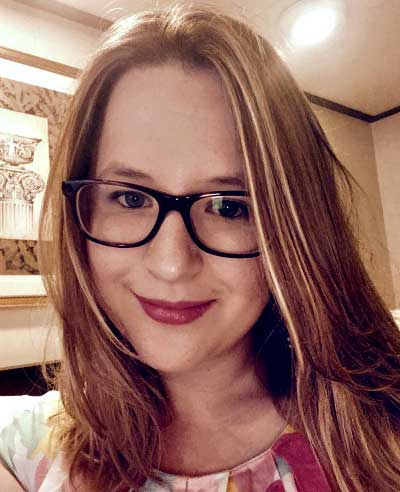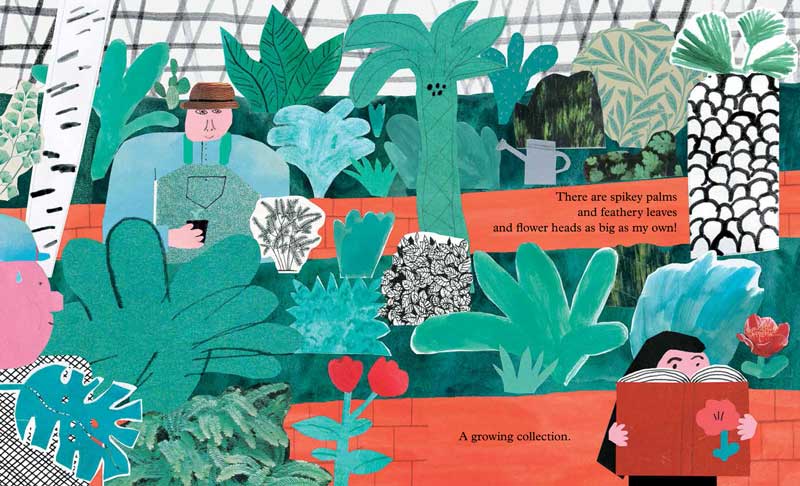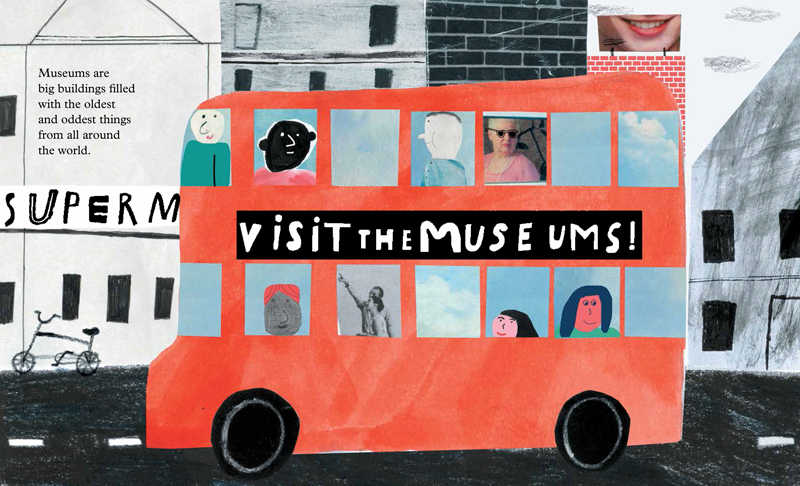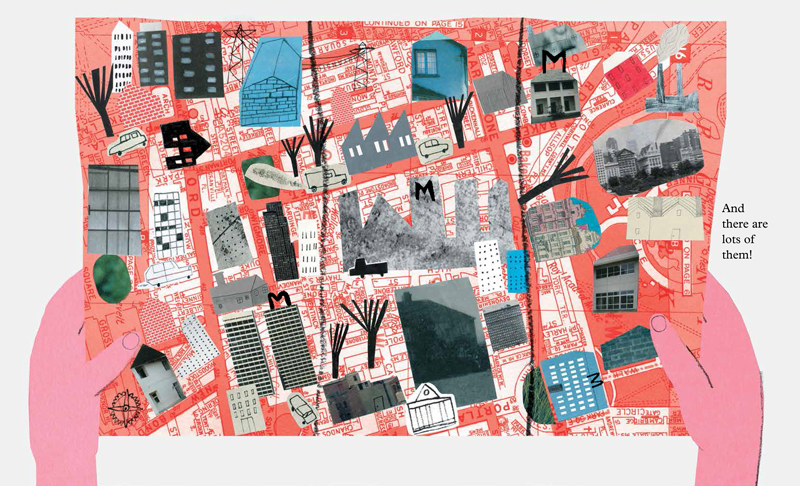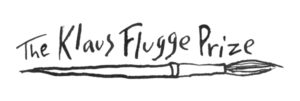
An interview with Holly Tonks, Commissioning Editor at Tate Children’s Books, and editor of The Museum of Me by Emma Lewis.
The Museum of Me by Emma Lewis is one of five books on the shortlist for the 2017 Klaus Flugge Prize. The judges found it an interesting and visually exciting book, and admired Emma Lewis’s use of collage. They spotted the influence of Scandinavian illustrators in the careful design and clean aesthetics.
When did you first come across Emma’s art and what was it about it that caught your eye?
We first met Emma at Bologna Book Fair. She approached the Tate stand and we sat down to have a look at her portfolio. In a fair like Bologna, it’s all very hectic and you see so many portfolios – so it’s always a magical moment when something catches your eye. Emma’s illustration style was a perfect fit for the Tate list – it’s expressive, fresh, unique and beautifully engaging.
How did The Museum of Me come about – was the idea Emma’s, or were you looking for someone to create a book about the idea of a museum?
Once back in the UK, Emma sent a few ideas over – one of which was The Museum of Me. This concept, married with her art style, felt like the perfect project for us. We loved the idea of encouraging young readers to take inspiration from their visits to various cultural institutions and use this to curate their own selection of meaningful objects. We are always looking for books that help us reach out to younger audiences and bring them into the magical world of galleries and museums, and Emma’s certainly felt like it met this criteria perfectly.
Could you describe how you and your designers worked on the book with Emma. What sort of editorial advice did you give her?
As this was Emma’s first picture book, we worked really closely with her to shape the story and select the different locations the character visits. We were really keen that this book had as broad an appeal as possible – so making sure we showed a wide range of cultural institutions that you can find in most major cities around the world was key. Our designer Lizzy helped Emma to shape the compositions and choose the text layout and placements to make sure that the spreads were perfectly balanced. Editorially, we had lots of conversations throughout the process to guide Emma to shape the story and make sure that the reader was always placed at the heart of the book.
Which is your favourite spread in the book and why?
It’s very hard to pick a favourite! But I think it has to be the spread inside the greenhouse. I’m always struck by the impact of the luscious greens contrasted by the vibrant pops of red. The elements of collage that Emma uses in this composition really bring to life the wonders of the greenhouse and the varied textures of nature. It also challenges the reader’s perception of what a ‘museum’ actually is and shows that a collection isn’t necessarily something kept behind glass cabinets or in stuffy buildings but actually has endless possibilities.
What advice would you give to those wanting to make a career in children’s book illustration?
Be confident in your style. I think many illustrators feel like they need to follow the trends of the market and adjust their style accordingly, but sometimes this means that the essence of their artwork is lost. I would encourage illustrators to be experimental and push the boundaries, as this is really how the industry moves forward and new trends emerge.
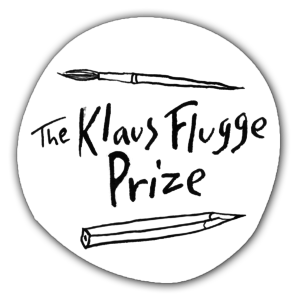
The Klaus Flugge Prize is funded personally by Klaus Flugge and run independently of Andersen Press.
Website maintenance & Copyright © 2023 Andersen Press. All Rights Reserved. Privacy & Cookie Policy.

